A microphone descends from the steel rafters into the waiting arms of a smartly dressed android sporting a slim tuxedo. On the outside of the caged arena, a packed stadium of fans screams and applauds, anxiously awaiting the beginning of the action.
Four formidable robots are illuminated by spotlights along the edge of the fighting ring, exhaust fumes accompanying the sounds of whirring mechanisms and primed engines. The referee holds its arm aloft and the crowd collectively holds an anxious breath. Its arm comes down and with a mighty ROAR, the robots charge towards each other.
Welcome to the Robot Fighting League, sponsored by VOLT, a game designed by Emerson Matsuuchi and published by HeidelBÄR Games.
VOLT: PROGRAM YOUR WAY TO VICTORY
As you’ve certainly gathered, VOLT is a game about programming robots in the ultimate showdown of fighting prowess.
Not familiar with any sort of coding language? No problem. You’ll be programming your robots to take movement and firing actions, systematically deducing what your opponents might try to have their robots do and thwart their plans.
Players can play as four unique robots in the quest for total robot domination:
- Reaper – Part RoboCop, part Dalek, this robot comes to the party with an arm gun and gigantic sawblade.
- The Hound – Step aside Goddard, there’s a new pup on the block. Equipped with four guns on its back, The Hound definitely doesn’t scream ‘Man’s Best Friend.’
- Mercury – Rolling into the shop on an omni-directional wheel, Mercury looks like a squat football lineman. If that lineman had quad-barrel guns for hands.
- Volt – The game’s namesake, Volt is all about keeping up with current events. And by that, I mean ELECTRICITY.
If you’ve ever played Robo-Rally or Koi, you’ll be familiar with the general flow of the game. Each player secretly programs their robots by placing dice on their three control units. Everyone then reveals their selections, and the actions are resolved numerically and by color dice used.
There’s quite a bit of strategy involved with determining how much movement you’re going to take, or if you’d rather focus on firing off blasts in multiple directions with the hope of damaging the other bots. Do you want to be first to fire or are you planning on your opponents moving within range? Should you prioritize movement thinking that enemy fire is going to be directed at you right away?
And if you didn’t have enough to worry about, what with Mercury’s Gatling guns or Reaper’s whirring sawblade, each of the four arena floors has their own set of hazards. You’ll have to maneuver around debilitating pits, electrical currents, and transparent walls to escort your robot to victory.
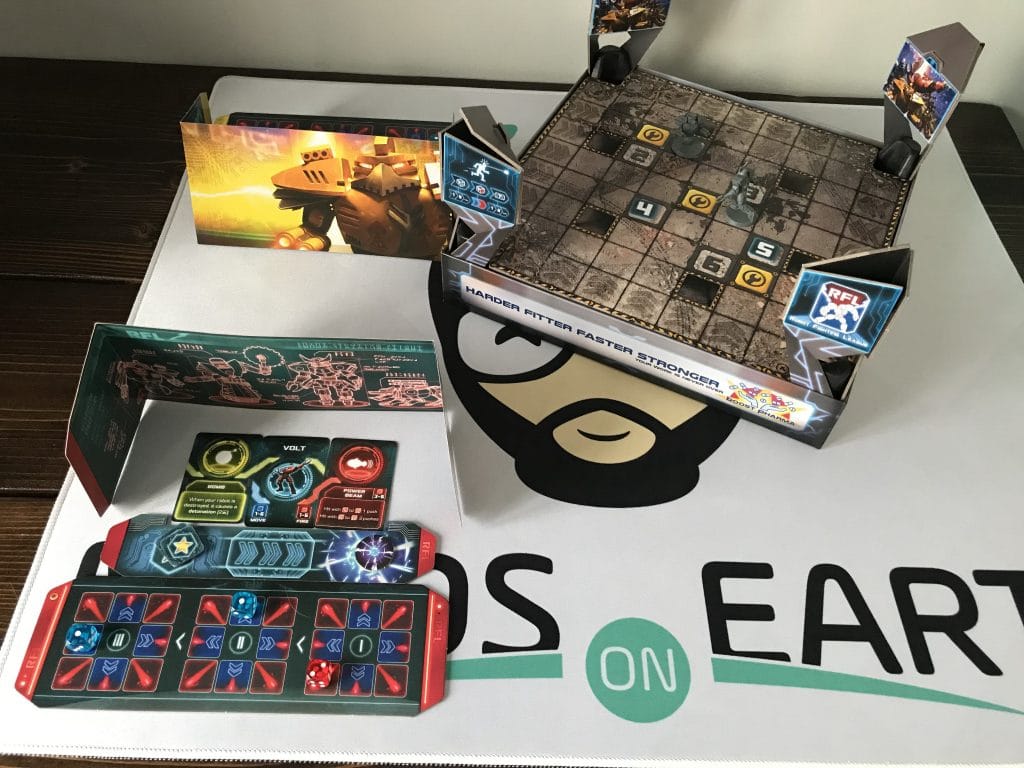
2v2 set up. ![]()
The player screens. 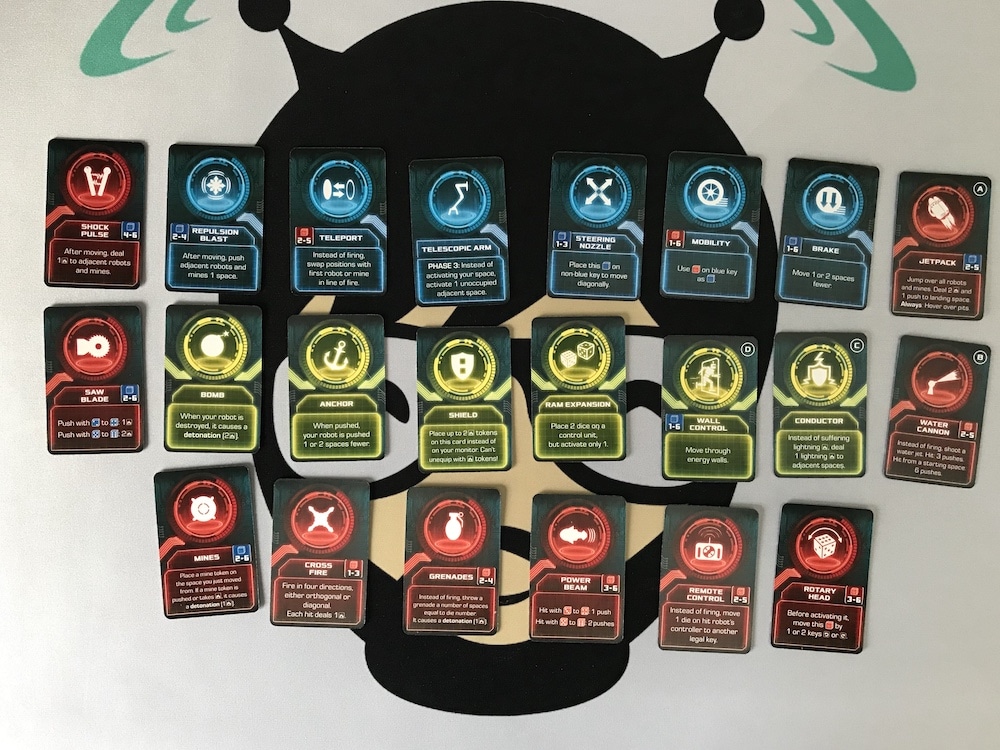
A glance at the Module Cards. ![]()
Four bot battle! There can only be one victor! 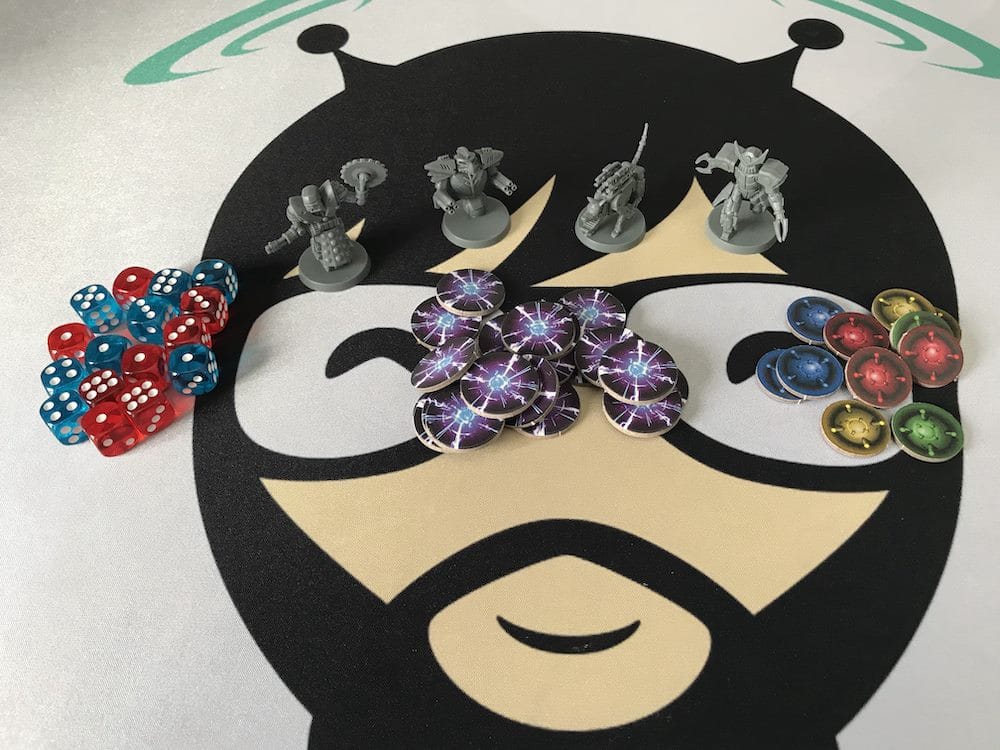
Various components. ![]()
The flippin’ sweet battle arena! 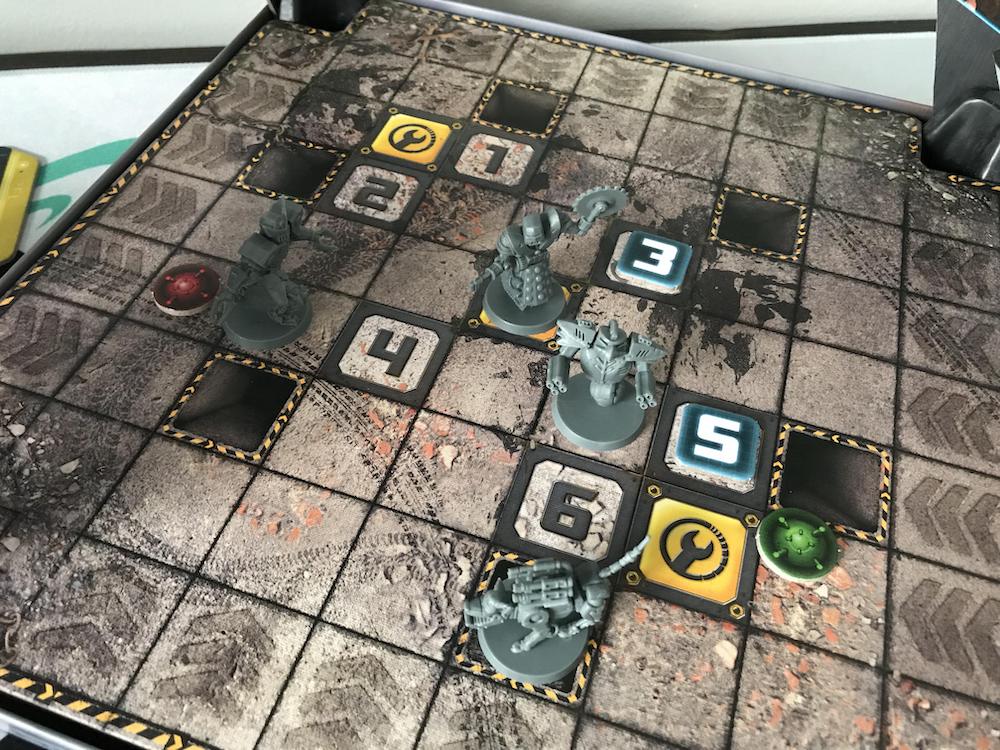
The bottommost bot caught in a pit trap! ![]()
Arena boards. 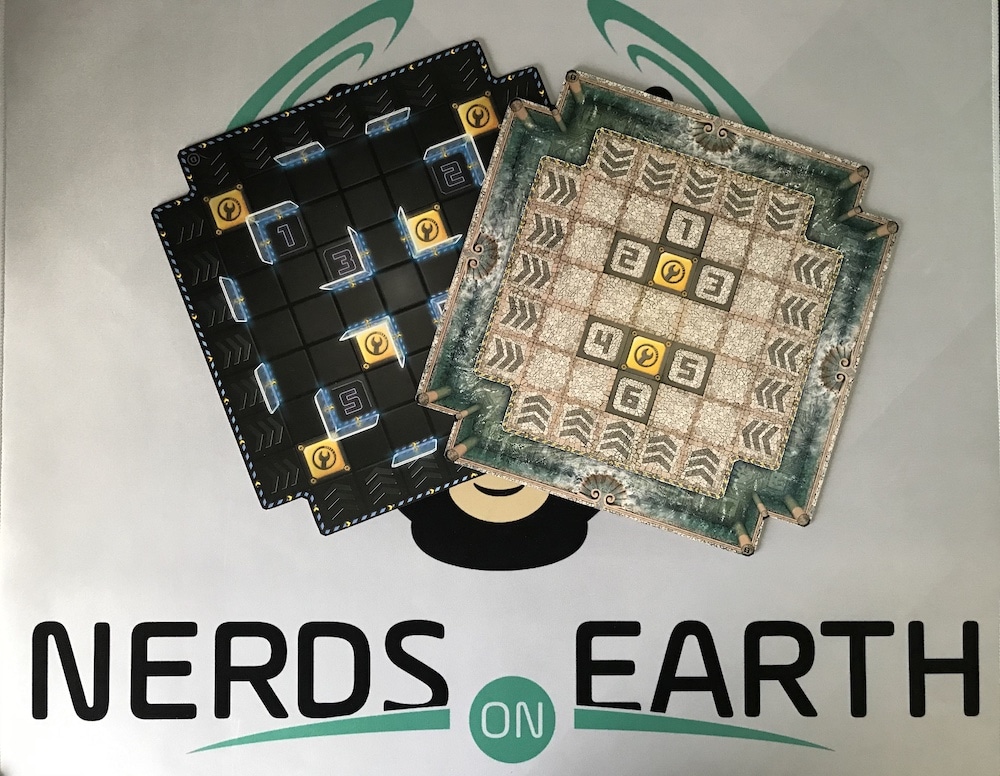
MORE arena boards!
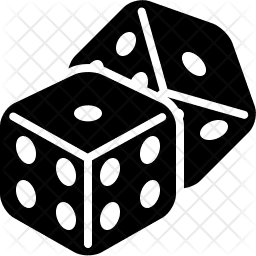 Components
Components
One of my favorite parts of VOLT is that the game box becomes the arena. Thick cardboard pillars and durable floor tiles transform the box into a fighting stage worthy of a championship bout. I’m also privy to the advertisements covering the side of the box; even the RFL capitalizes on prime marketing opportunities.
But in a game about fighting robots, you better believe that there are going to be some robot miniatures in the box. These minis are expertly crafted and completely ready for a coat of paint to really seal the deal. These components aren’t going to get battered, no matter how many battles these robots endure.
 Luck
Luck
When I first saw dice in the box, I immediately became skeptical. As a strategy-game enthusiast, I generally like randomness to be kept to a minimum in games where dice aren’t the primary component.
Fortunately, the dice are merely a vessel for program selection. Everything that your robot does (or doesn’t do) is directly linked to the actions that you prepped in the control units. As I mentioned earlier, the dice-face that you select in your program is going to play a huge part in ensuring your robot survives.
Luck is only going to be a component of the game if you’re playing with the included modules, which grant additional abilities and reactionary powers to your bots. Accessing these modules requires a visit to the various Workshop squares in the arena, where you draw cards from a deck. Apart from that, you’re relying on your own abilities to steer towards that title belt.
 Aesthetics
Aesthetics
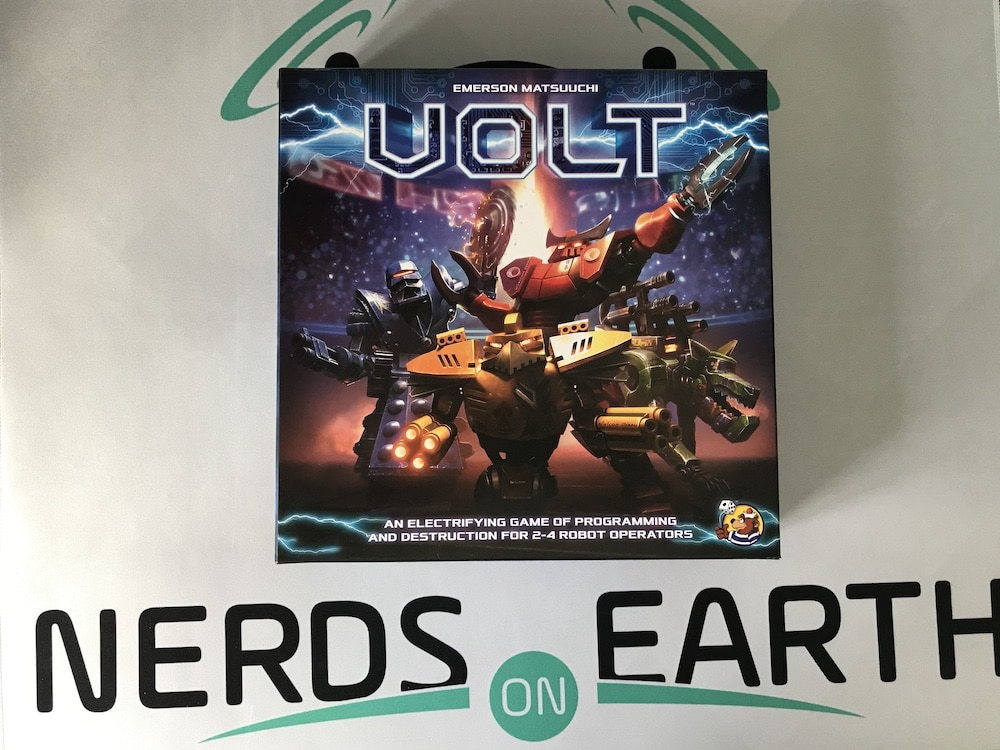
From the cardboard arena to the damage counters and player screens, VOLT is oozing with futuristic imagery. You can vividly feel the robotic power through the font choices, and everything feels cohesive.
I’m especially appreciative of the two rulebooks. One is strictly for the easy/beginner mode that introduces the base concepts of the game, while the other includes the modules and game boards to convey more complicated scenarios. There are some minor design flaws with the rule examples where you are sometimes left searching for the section of the game-state that the rules are referring to, but for the most part the verbiage is concise.
In addition, the module design creates the feeling of installing enhancements in your robot by setting up the cards in a way that the modules feel organic to the original schematic. As the scrap piles up, the growing pile of damage counters and victory points only adds to the hype.
 Interest
Interest
This game handles drastically differently depending on whether you’re playing with two players or four. Adding more players and filling up the arena is going to create a more complex and chaotic game where shots are flying in all directions.
Two-player variants play more like a sophisticated game of robotic chess, where your choices have more weight and meaning. There’s still enough complexity and strategy to be considered a ‘thinking game,’ but don’t take that as meaning the game is dry; games are fast-paced and quick, usually lasting around 30 minutes.
The different arena floors and modules help keep the game fresh, and it’s a great example of sequencing and logical thinking. While the basic, non-module version is easier to understand, I wouldn’t recommend this game for children under ten years old.
There are also a couple variants included in the rules including a Championship Circuit as well as rules for incorporating AI characters. That way you can pretend to be Sarah Connor hoping to put an end to the inevitable robotic uprising.
 Mood
Mood
Expect there to be groans, cheers, and whoops as the player screens reveal the program sequence that’s about to unfold each round. There are some remarkable interactions that can happen, like multiple robots being pushed off into a pit, or narrowly avoiding several weapon blasts because of a coincidental programming choice you made.
When your robot is on its last legs, you’re really going to be pulling for them to pull off an upset. Things are going to get intense, so brace yourself!
VOLT: Energizing Robotic Competition
Time for me to stake my C.L.A.I.M. on VOLT! It’s methodic. It’s chaotic. It’s a smashing good time. If you can’t get your hands on tickets to the next season of BattleBots, this is the next best thing to get your fill of robotic carnage.
And it might be even better since you don’t have to rebuild anything except the arena when you’re bringing the game out for another spin. There won’t be any oil spills to clean up after the crowds have left the arena.
You can try to find VOLT at your FLGS, but it might be a little scarce. Amazon has it here. The game is actually a reimplementation of Volt: Robot Battle Arena, so make sure that you’re picking up the latest version of the game.
[Disclosure: Asmodee provided Nerds on Earth with a copy of Volt in exchange for an honest review.]





